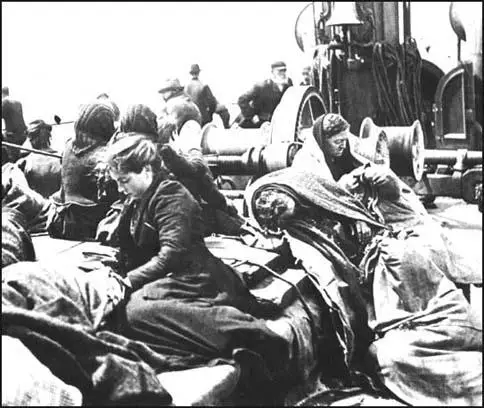Disease and Immigration
A major problem for emigrants travelling to America was disease. Cholera, transmitted by contaminated water, was a major health problem for those on board ship . In overcrowded conditions the disease spreads very quickly. On 18th May, 1832, the ship Brutus, sailed from Liverpool to Quebec. The first case of cholera was identified on 27th May. By 3rd June so many of the passengers had died the captain decided to return to England. By the time the ship arrived back in Liverpool 81 had died of the disease. Cholera also broke out on other ships bound for the United States and Canada that summer. The Carricks lost 42 passengers before arriving in Quebec whereas 29 died on board the Constantia.
This was the start of a cholera epidemic that was spread from England to Canada and the United States. In 1832 over 4,000 people died of cholera in Quebec and Montreal. There were also large number of deaths in other major immigrant centres such as New York and Chicago.
There were also outbreaks of cholera in 1848 and 1853. Of the 77 vessels which left Liverpool for New York between 1st August and 31st October, 1853, 46 contained passengers that died of cholera on the journey. The Washington suffered 100 deaths and the Winchester lost 79. All told, 1,328 emigrants died on board these 46 ships.
The most common killer was typhus. It was particularly bad when the passengers had been weakened by a poor diet. In 1847, during the Irish Famine, 7,000 people died of typhus on the way to America. Another 10,000 died soon after arriving in quarantine areas in the United States. Most of the deaths were of immigrants from Ireland.
In 1847 a total of 98 passengers died of typhus on the Sir Henry Pottingersailing from Cork in Ireland to Quebec in Canada. Another 158 died on board the Virginius. That year 5,293 died of the disease on the journey to Canada. Another 10,037 died soon after arriving at their destination.
There was another outbreak of cholera in 1866. The England, carrying over a thousand emigrants from Liverpool to New York, had 40 die of the disease while crossing the Atlantic. Another 227 died soon after arriving in America.

Primary Sources
(1) William Smith, a weaver emigrating from Manchester, was on board the India, a ship going from Liverpool to New York, when there was an outbreak of typhus that killed twenty-six passengers.
The scenes I witnessed daily were awful; to hear the heart-rending cries of wives at the loss of their husbands, the agonies of husbands at the sight of the corpses of their wives, and the lamentations of fatherless and motherless children; brothers and sisters dying, leaving their aged parents without means of support in their declining years. These were sights to melt a heart of stone. I saw the tear of sympathy run down the cheek of many a hardened sailor.
(2) Reverend William Bell, writing about the quality of the water on a boat sailing from Leith to Quebec in 1817.
Our water has for some time past been very bad. When it was drawn out of the casks it was no cleaner than that of a dirty kennel after a shower of rain, so that its appearance alone was sufficient to sicken one. Buts its dirty appearance was not its worst quality. It had such a rancid smell that to be in the same neighbourhood was enough to turn one's stomach.
